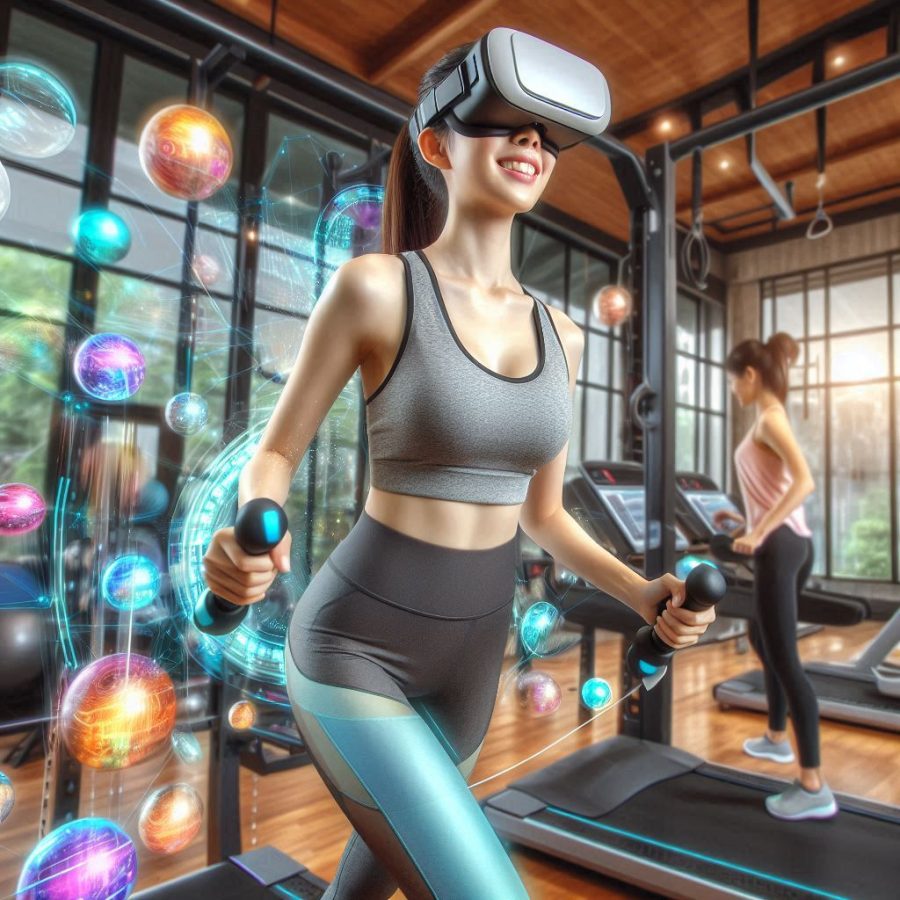Every time I unlock a new level on my favorite app, I can’t help but notice how much it feels like playing a classic video game. From fitness trackers to language learning apps, gamification has become a powerful tool to keep users engaged and motivated. But what exactly makes these modern apps so addictive?
Classic game design principles like points, badges, and leaderboards have seamlessly integrated into our daily digital experiences. These elements tap into our innate desire for achievement and competition, transforming mundane tasks into exciting challenges. In this article, I’ll explore how these timeless game mechanics are shaping the apps we can’t live without and why they’re so effective.
The Evolution of Gamification
Gamification’s roots trace back to early video games in the 1970s and 1980s. These games introduced basic mechanics like point scoring and levels, aiming to keep players engaged. Over time, these elements evolved, becoming more sophisticated and incorporating complex narratives and rewards systems. Developers noticed that these mechanics increased user engagement and retention significantly.
The concept expanded beyond video games in the early 2000s. Businesses began to apply game design elements to non-game contexts. Loyalty programs incorporated point systems to reward repeat customers. Educational platforms introduced badges and levels to motivate learners. By 2010, gamification became a recognized strategy across numerous industries.
With the rise of smartphones, gamification flourished in mobile apps. Fitness apps used step counters and achievement badges to nudge users toward healthier lifestyles. Language learning apps introduced streaks and leaderboards to keep learners motivated. These apps demonstrated how classic game design could transform daily tasks into more engaging experiences.
Today, gamification continues to evolve. Artificial intelligence and augmented reality are creating more immersive and personalized gamified experiences. Businesses leverage big data to refine gamification techniques and target specific user behaviors. The evolution of gamification shows no signs of slowing, continually reshaping how we interact with technology. A great example of this trend is the rise of the Plinko app, which blends classic game mechanics with modern technology to offer an engaging and interactive experience for users.
Essential Game Design Principles
Game design principles transform modern apps, making them more engaging and interactive. Several principles from classic game design significantly influence today’s app development.
Rewards and Feedback Systems
Rewards and feedback systems keep users motivated and engaged. Immediate feedback provides users with a sense of accomplishment (e.g., receiving points or badges). Consistent rewards encourage ongoing interaction by creating short-term and long-term goals. In educational apps, users unlock new levels or receive badges upon completing lessons.
Challenges and Progression
Challenges and progression create a sense of achievement and continuity. Increasingly difficult levels or tasks keep users engaged by ensuring they’re constantly challenged. Fitness apps incorporate progression by setting daily exercise goals, with increasingly difficult milestones to be achieved over time. This keeps users motivated and consistent in their practice.
Social Interaction and Competition
Social interaction and competition leverage users’ desire for community and recognition. Leaderboards, social sharing features, and multiplayer options enable competitive elements that drive engagement. Language learning apps, for instance, allow users to compete with friends, adding a social layer to individual progress. This interaction amplifies motivation through peer influence and rivalry.
These essential game design principles from classic games now form the backbone of many modern apps, seamlessly integrating into various domains to enhance user experience and engagement.
Applications of Gamification in Modern Apps
Gamification drives engagement in various modern apps. Incorporating game design elements transforms user experiences across multiple sectors.
Fitness and Health
Fitness apps use gamification to motivate users through goals and rewards. I see features like streak badges and achievement dashboards in apps like MyFitnessPal and Strava. These elements encourage consistency. Leaderboards in apps compare user performance with peers, fostering a sense of competition and community. Integrating challenges, such as daily step goals, keeps users actively engaged, turning mundane activities into rewarding experiences.
Education and Learning
Education apps gamify learning to make educational content more engaging. Duolingo and Khan Academy use experience points and leveling systems. Progress bars and immediate feedback guide learners through complex subjects. In my observation, badges and certificates recognize accomplishments, boosting motivation. Quiz-based challenges and timed tasks keep users focused and provide a sense of achievement, making learning interactive and enjoyable.

Productivity and Work
Productivity apps gamify tasks to enhance user efficiency. Applications like Todoist and Habitica integrate task completion with rewards and progress tracking. Points and streaks reflect productivity levels, encouraging consistent effort. Virtual rewards, like avatar upgrades, keep users hooked. Adding elements like project leaderboards and team challenges promotes collaboration, making work feel more like a game and less like a chore.
Gamification elements like rewards, challenges, and social interaction enhance user engagement. These elements are derived from classic game design principles and tailored to modern app interfaces, revolutionizing user experiences.
Benefits and Drawbacks
Gamification has transformed app user experiences, offering both benefits and challenges. This section explores its positive impacts and potential pitfalls.
Positive Impacts
Gamification significantly boosts user engagement. Elements like rewards, leaderboards, and challenges create motivation. For example, in fitness apps, streak badges and leaderboards encourage consistency. Education apps see higher retention rates due to interactive features like experience points. Productivity apps benefit as gamification makes task management enjoyable, leading to increased efficiency. Health and education sectors particularly gain from improved adherence and learning outcomes.
Potential Pitfalls
Despite its benefits, gamification has drawbacks. Over-reliance can lead to user burnout. If apps become too game-like, users might prioritize rewards over actual goals. Additionally, poorly designed gamification may frustrate users. In productivity apps, users could focus more on rewards than completing meaningful tasks. Fitness apps risk encouraging unhealthy competition if leaderboards are overly competitive. In education, the quest for points might overshadow genuine learning.
Future Trends in Gamification
Predictive Analytics
Predictive analytics is revolutionizing gamification. Apps now utilize data to anticipate user behavior, creating personalized experiences. For example, fitness apps suggest workouts based on past performance data. This trend not only keeps users engaged but also helps in tailoring challenges to individual capabilities.
Augmented Reality Integration
Augmented reality (AR) is paving the way for immersive gamification. Entertainment and education apps are increasingly incorporating AR to make learning and interaction more engaging. Apps like Pokémon GO have set the stage for this integration, enhancing user interaction with their surroundings.
Deeper Social Integration
Social integration in apps is becoming more profound. Future gamification will leverage social features, enabling users to share achievements, compete with friends, and collaborate on challenges. Social media platforms already utilize these features, fostering a sense of community and competition.
Blockchain for Rewards
Blockchain technology is making its way into gamification. Transparent and secure, blockchain can enhance reward systems in apps. Users might earn tokens for achievements that can be exchanged for real-world rewards. This technology ensures fair distribution and enhances user trust.
AI-Driven Customization
Artificial Intelligence (AI) is driving personalized gamification. AI analyzes user data and preferences, customizing challenges and rewards. Educational apps, for instance, adjust difficulty levels based on student performance, making learning more effective.
Microlearning Modules
Microlearning modules are making app experiences more efficient. These bite-sized educational chunks, gamified for engagement, cater to users’ short attention spans. Platforms offering language learning or professional skills development are adopting this trend.
Ethical Gamification
Ethical considerations are gaining prominence. Future gamification will focus on balance, ensuring it motivates without causing stress or addiction. Developers are recognizing the need for responsible design practices, creating healthier user interactions.
Mixed Reality Advancements
Mixed reality (MR) is combining AR and virtual reality (VR) for enhanced gamification. Future apps will offer MR experiences, bridging the gap between digital and physical worlds. This trend is particularly promising for industries like real estate and healthcare.
Increased Use of Wearables
Wearable technology is integrating with gamification. Devices like smartwatches and fitness trackers are gamifying health and fitness routines. Users receive real-time feedback and rewards, motivating them to achieve their goals.

Conclusion
Gamification’s influence on modern apps is undeniable. By incorporating elements like streaks badges and leaderboards developers create engaging and motivating experiences. Future trends promise even more personalization and immersion through technologies like AI augmented reality and blockchain. As we move forward it’s crucial to design these gamified experiences responsibly ensuring they enhance user engagement without compromising ethical standards. The potential for gamification to transform how we interact with apps is immense and I’m excited to see where it takes us next.






 Your total news and information resource for all things Science, Technology, Engineering / Mathematics, Art, and Medicine / Health.
Your total news and information resource for all things Science, Technology, Engineering / Mathematics, Art, and Medicine / Health.
Leave a Comment